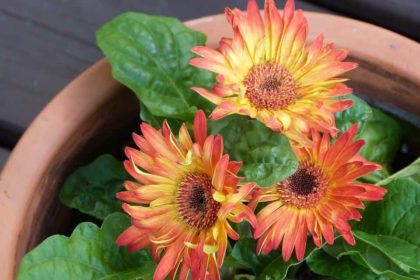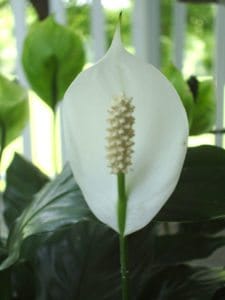House Plants Reduce VOCs and Create Healthier Environments

House Plants Can Contribute to Healthier Indoor Environments
We spend about 90% of our time indoors. While inside, we are exposed to a variety of indoor air pollutants. Reducing or removing these pollutants and creating an optimal indoor environment is important to our health and well-being. House plants reduce VOCs (volatile organic compounds) and are an easy and inexpensive way to improve our indoor environments.
Plants offer multiple benefits. They purify our air by reducing various pollutants and reducing carbon dioxide levels. They have been shown to boost productivity, reduce stress, enhance well-being, and promote workplace satisfaction. They are also beneficial to recovery and stress reduction in hospitals.
House Plants Reduce VOCs using Air Filtration

peace lily
Indoor air pollution can induce Sick Building Syndrome (SBS), with symptoms of coughing, wheezing, headaches, sore eyes, nose, or throat, loss of concentration and nausea. Common indoor air pollutants include nitrogen and sulfur oxides, carbon monoxide and dioxide, fine particulate matter, ozone, and various volatile organic compounds.
House plants reduce VOCs by absorption from the air into their leaves and then trans-locating the VOCs to their root zone, where microbes break them down. Microbes in the soil can use trace amounts of pollutants as a food source. Root tissues also take in aqueous solutions and air, and uptake by root tissues may purify air.
A NASA study found certain plants removed significant amounts ( as much as 90% ) of the VOCs formaldehyde, benzene, and trichloroethylene. The plants used in the study were bamboo palm, Chinese evergreen, English ivy, ficus, gerbera daisy, Janet Craig, marginata, mass cane/corncane, mother-in-law’s tongue, peace lily, pot mum, and warneckei. Other studies have found that areca palm, lady palm, rubber plant, philodendron, dwarf date palm, and Boston ferns can also remove a significant amount of VOCs. More information on VOC filtration can be found in the links below:
http://www.colostate.edu/Depts/CoopExt/4DMG/Plants/clean.htm
https://ntrs.nasa.gov/archive/nasa/casi.ntrs.nasa.gov/19930073077.pdf
http://www.ctahr.hawaii.edu/oc/freepubs/pdf/of-39.pdf
House plants reduce VOCs and CO2

Chinese evergreen
Carbon dioxide (CO2) is a surrogate for indoor pollutants emitted by humans and correlates with human metabolic activity. Unusually high carbon dioxide levels indoors may cause occupants to grow drowsy, get headaches, or function at lower activity levels. An office study by the University of Technology, Sydney, notes that plants can remove up to 10 percent of the carbon dioxide in air conditioned buildings and 25% in naturally ventilated buildings. It also found that three to six plants in an office can keep air toxins far below total recommended levels. A link to the study is provided below:
http://www.inive.org/members_area/medias/pdf/inive%5Ciaqvec2007%5Ctarran.pdf
The Biophilia Hypothesis
The Biophilia Hypothesis suggests there is a bond between human beings and nature. This bond (or absence thereof ) can affect our health and well-being. House plants can play a role in this. A study by the Norwegian Institute of Public Health and Norwegian University of Life Sciences found that an environment devoid of nature, including the visual absence of plants, can have an undesirable impact on health and quality of life. On the other hand, contact with Nature has been reported to have psychological benefits by reducing stress, improving attention, having a positive effect on mental restoration, and by coping with attention deficits. In addition to mental advantages, there appear to be direct physical health benefits, such as increased longevity, and self-reported health.
Other studies demonstrated that adding plants to office settings decreases fatigue, colds, headaches, coughs, sore throats and flu-like symptoms – symptoms associated with Sick Building Syndrome.
A study from Kansas State University determined that adding plants to hospital rooms led to significantly shorter hospitalizations, fewer intakes of analgesics, lower ratings of pain, anxiety, and fatigue. Patients with plants experienced more positive feelings and higher satisfaction about their rooms when compared to patients in rooms without plants.
More information on Biophilia can be found below:
http://www.actahort.org/books/639/639_31.htm
http://hortsci.ashspublications.org/content/44/1/102.full.pdf+html



